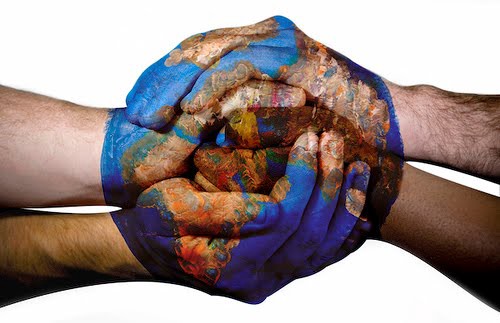
And how you can avoid them.
Business is becoming more and more a culturally diverse playing field, and Cultural Diversity is becoming increasingly important. However, there are a number of misperceptions about exactly what Cultural Diversity is, particularly within the context of a company. Let’s take a look at five of the most common misperceptions:
1) Cultural Diversity is primarily relevant to working in other countries/cultures. This was more true perhaps forty or fifty years ago. But today, the average medium-to-large sized company may have employees from five, ten, or more different cultures, all working together in the same office. And of course, their customers/clients are likely to be from a wide variety of cultural backgrounds, also.
As little as a decade ago, almost all culturally-related training was reserved for people being sent to work in another country/culture. But today, companies are coming to recognize more and more that Cultural Diversity is a critical component of their internal operations.
2) Being culturally diverse is the same as having Cultural Diversity. This is the fairly common idea that simply by intentionally hiring staff that come from different cultural backgrounds, a company has accomplished Cultural Diversity. Yet in too many cases, many of those ‘cultural outsiders’ may feel ostracized and misunderstood, and have real difficulty integrating into the company, working effectively on teams, etc.
It isn’t enough to just throw together a bunch of people from different cultural backgrounds. In fact, doing this without investing in improving the Cultural Intelligence of your employees, can actually backfire and cause more problems. A company that can truly claim to have Cultural Diversity is one that not only can point to having staff from many different cultural backgrounds, but that can also demonstrate that those different cultures are able to work together, communicate, and understand each other effectively.
3) Racial diversity equals Cultural Diversity. In interviews with the HR managers of many companies, when I’ve raised the question of Cultural Diversity, they’ve assured me that their company has a very diverse cultural composition — Chinese, Indian, Kenyan, etc. Yet in many cases, when we looked at it more closely, many of those people had actually be born and raised in North American culture, and had little or no ties to the culture of their ancestral nations.
There is, unfortunately, still a tendency to equate race and culture. Yet, when we think about it even a little, we recognize that people of the same race can have very different cultures…and that people of obviously different races can have the same cultural background. This is an subconscious blind spot that is an impediment not only to implementing effective Cultural Diversity, but also for helping to eliminate the perception of some of your employees that they are subjected to cultural stereotypes because of their race, which can lead to an unwelcoming or even hostile workplace environment.
4) Cultural Diversity is based on understanding cultural stereotypes.Odds are, you’ve heard it before. “Chinese people are like this” and “Germans are like this” and “Egyptians are like this”. These cultural stereotypes, while having some value on a very general basis, can actually be very damaging and counter-productive when applied to individuals. In developing Cultural Diversity within a company, it is important to emphasize the commonalities between different cultures (I wrote another article on this topic here); and to de-emphasize stereotypes, in favor of treating people as unique individuals.
Traditional cultural training programs are based on cross-cultural or intercultural models, that were developed primarily for people being sent to work in a specific culture. But in today’s multicultural environment, where we are dealing daily with people from many different cultures, it is far more important to develop our Cultural Intelligence — our ability to recognize and interpret a person’s behavior and reactions as an individual, rather than based on a more-than-likely inaccurate stereotype.
5) Cultural Diversity is an impossible pipe dream. There are those who maintain that bringing together many different cultures and trying to get them to work/live together, is impossible…that it leads only to confusion, misunderstanding, and conflict. And more than likely, they can rattle off stories and statistics about various situations where that is exactly what has happened.
It is true that bringing people together from different cultural backgrounds, without the proper environment and training, can be counterproductive and even disastrous. But it is not inevitable, and there are also many stories of great successes and triumphs when people of different cultural backgrounds have joined forces to help each other. The key difference is Cultural Intelligence. Bring together a group of people from diverse cultural backgrounds without much Cultural Intelligence, and you’re more than likely going to have significant problems. But do the same with people who have high Cultural Intelligence, and you have a recipe for exceptional accomplishments, as their various perspectives and approaches can be utilized most effectively. That is when you have achieved true Cultural Diversity.

Leave a Reply
You must be logged in to post a comment.